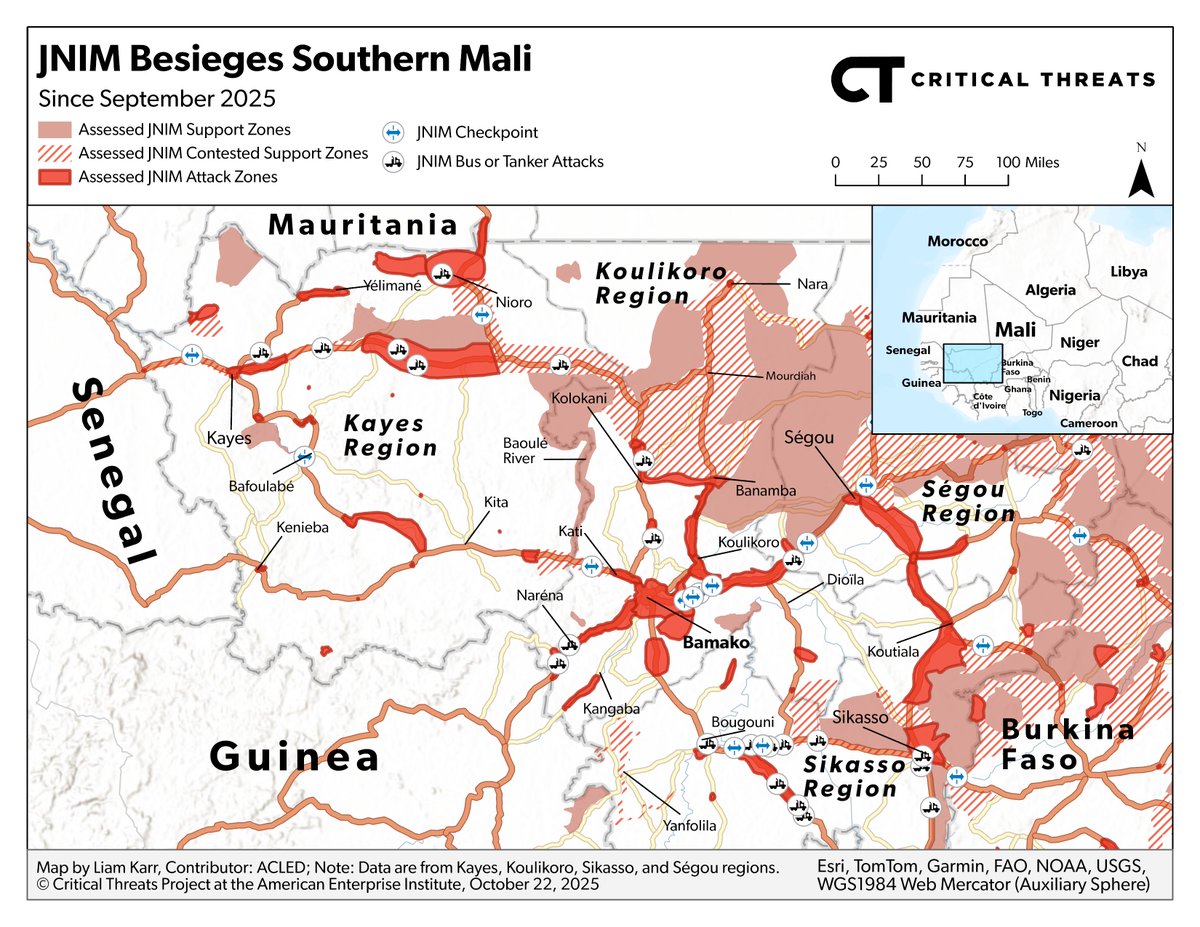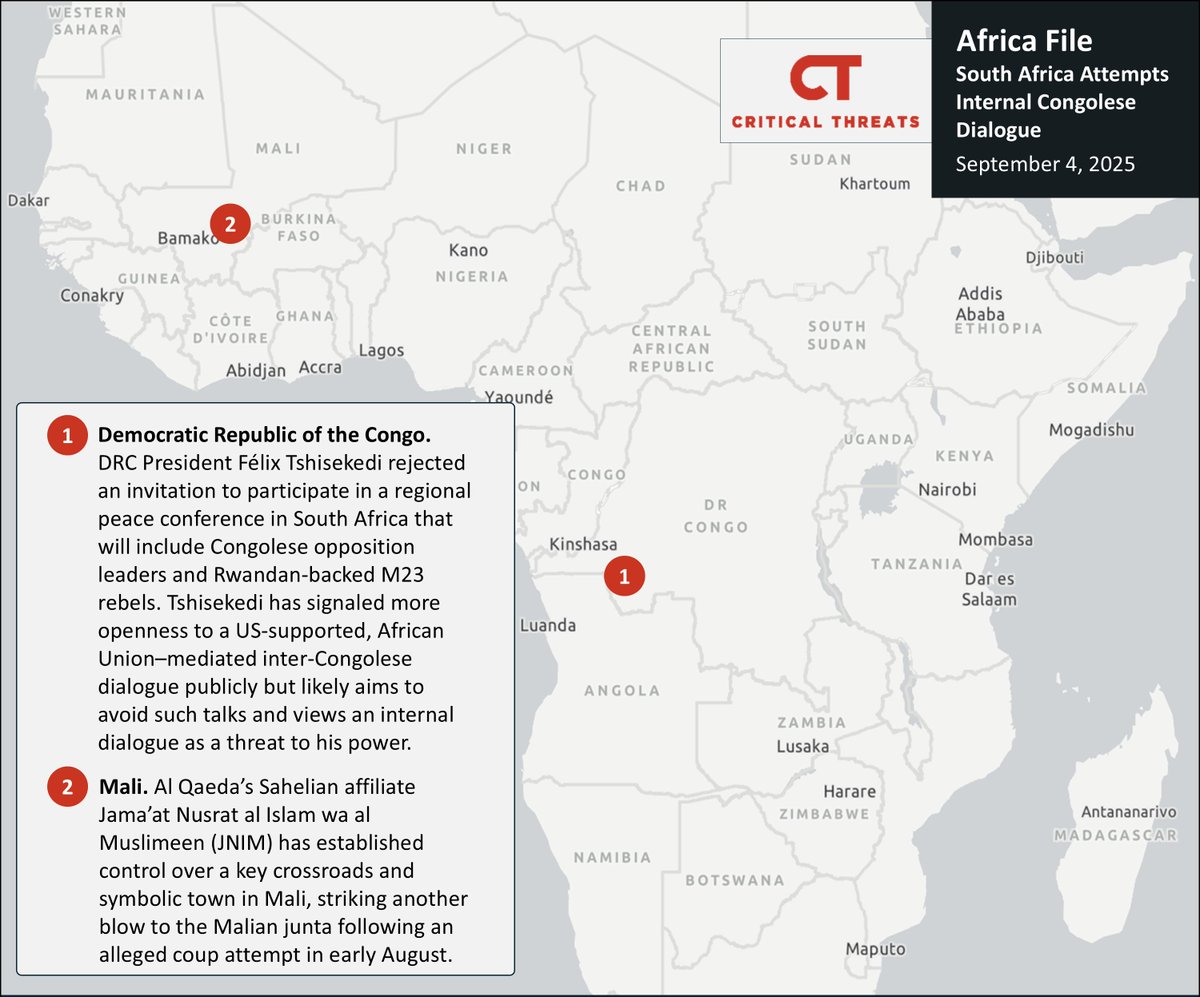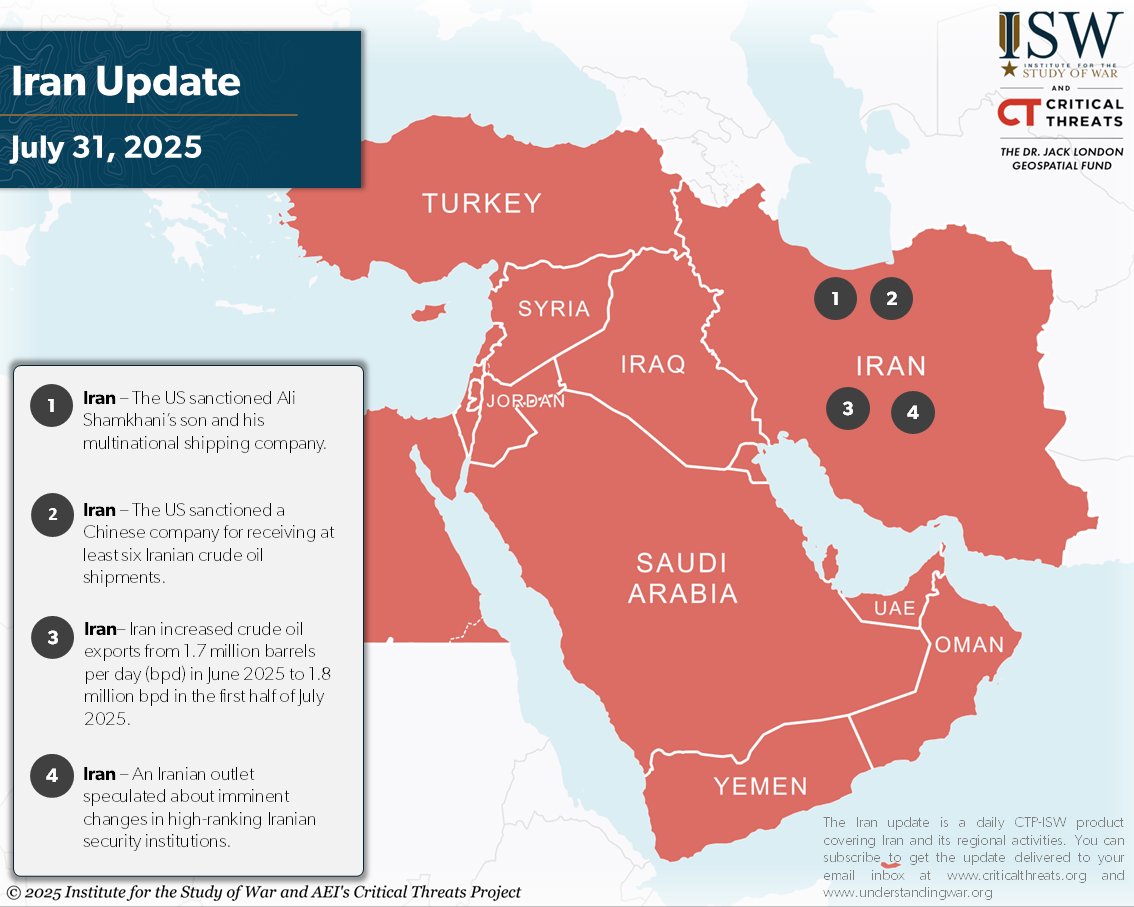#Ukrainian officials confirmed that #Russian forces are using #Iranian-provided drones in #Ukraine. Read today’s update from @criticalthreats and @TheStudyofWar. criticalthreats.org/analysis/russi… 
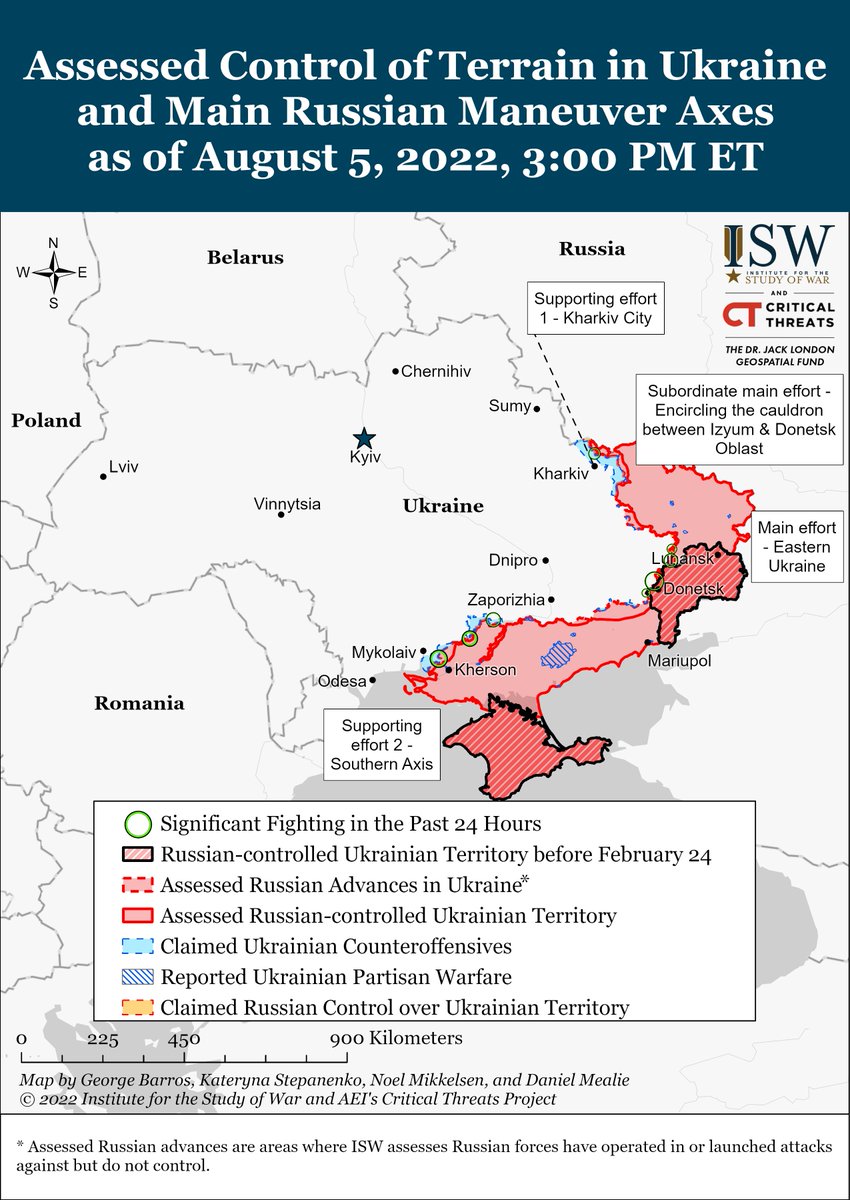
#Russian forces conducted several limited ground assaults to the north, northwest, and southwest of #Donetsk City. 

#Russian forces continued to focus on preventing #Ukrainian forces from creating conditions to resume a counteroffensive on the #Kharkiv City Axis on August 5. 

#Russian forces unsuccessfully attempted to advance on #Lozove, #Kherson Oblast, likely targeting the #Ukrainian bridgehead over the #Inhulets River. 

#Russian federal subjects (regions) continued to form regionally-based volunteer battalions. 
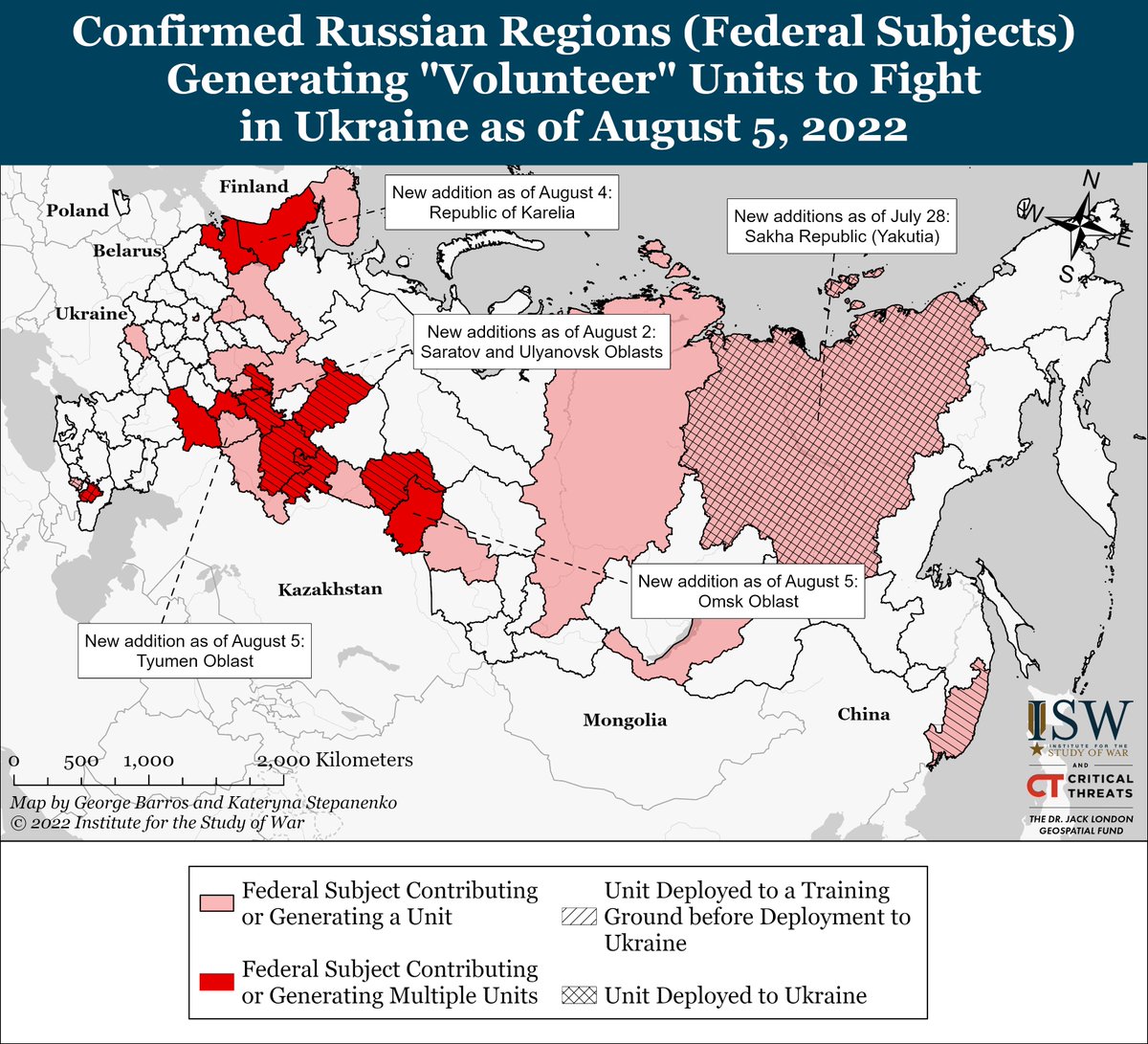
• • •
Missing some Tweet in this thread? You can try to
force a refresh


